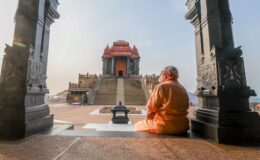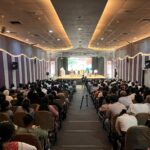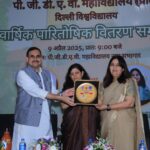DEVELOPING HERITAGE CIRCUITS IN INDIA
- By : Anirban Ganguly
- Category : Articles
The Buddhist tourism project taps into the country’s civilisational repositories and can re-create bridges with regions that once fell within its cultural ambit
The concept of cultural-religious circuits has been given a fillip by the Union Budget for 2014-2015. In a welcome move an amount of Rs 500 crore has been set aside to launch the initiative and lay the foundation for its future evolution and expansion. The amount earmarked may be sufficient for initial planning but will have to see further enhancement in order to expand the project to other regions and include other dimensions. Such a project, when expanded and diversified, can evolve into an effective instrument to project and showcase India’s civilisational achievements as well as her continuity as one of the few vibrant and existing civilisation-states.
The recent announcement proposing to develop a Buddha-Buddhism circuit in India, in fact, answers a long-felt need to tap our civilisational-cultural repositories in order to re-create cultural bridges with regions that once fell within India’s cultural ambit and which, even today, look to her as the sacred land, the land of the Masters and of esoteric truths. Apart from the strategic issue of fast-tracking infrastructural growth in some of our key border regions, the Buddha circuit also provides a fresh impulse to launch a round of Buddha-diplomacy with an exclusive focus on the Southeast Asian region — by inviting a greater scope for interaction and exchange between countries of that region and India. It has the potential of turning India, once more, into a civilisational point de recontre for these various cultures and civilisation.
Similar attempts could be made in the long run to develop Ramayana and Mahabharata circuits in India — making the journey for those who undertake it, a rich and multi-faceted delving into the spirit of Indian civilisation and into her cultural and spiritual ethos. The themes in these circuits can focus on all the various other cultural and religious expressions of the era as well. The Indian epics have always been popular in the archipelago region and beyond and over the millennia have seen innovative renderings there, tinged with local flavours and perceptions.
In his Ramayana in Laos, Mr Sachchidanand Sahai, veteran scholar of India’s civilisational imprint in South East Asia, talks of how in “addition to the Valmikian edition” of the epic many “non-Valmikian versions travelled to South East Asia with the Indians of different origins and areas, who visited the region or settled there from time to time” and were inextricably woven into the region’s psyche and into the fabric of its societies.
In Laos, for example, notes Mr Sahai, the country, Ceodès, described as the “out-post” of Hindu civilisation, the Rama story “remained prevalent in a number of versions as part of the living tradition.” Such epic circuits, thus, if developed in earnest in India, promises to positively attract the lay tourist, the seeker and scholar from this region, and can hugely contribute to re-animating these past links and cement them against a contemporaneous backdrop.
The idea of evolving a knowledge circuit in India could perhaps be considered someday. Ancient India as a vibrant knowledge society, with a highly advanced university network across the continent that attracted some of the most inquisitive minds from across the old-world could, through such a circuit, be brought alive once more before the modern mind perpetually in search of knowledge anchors and a civilisational direction in education. An 18th century description of the grand university of Navadveep — “Nudeah” in Bengal, found in the Calcutta Monthly Register of January 1791, for instance, refers to the grandeur of the university’s foundation and how, even in a much depleted state, the university attracted pupils from “distant parts”, taught a wide variety of subjects and was richly endowed with lands to support itself. Unravelling these aspects and showcasing them innovatively may prove to be a fascinating exercise.

















